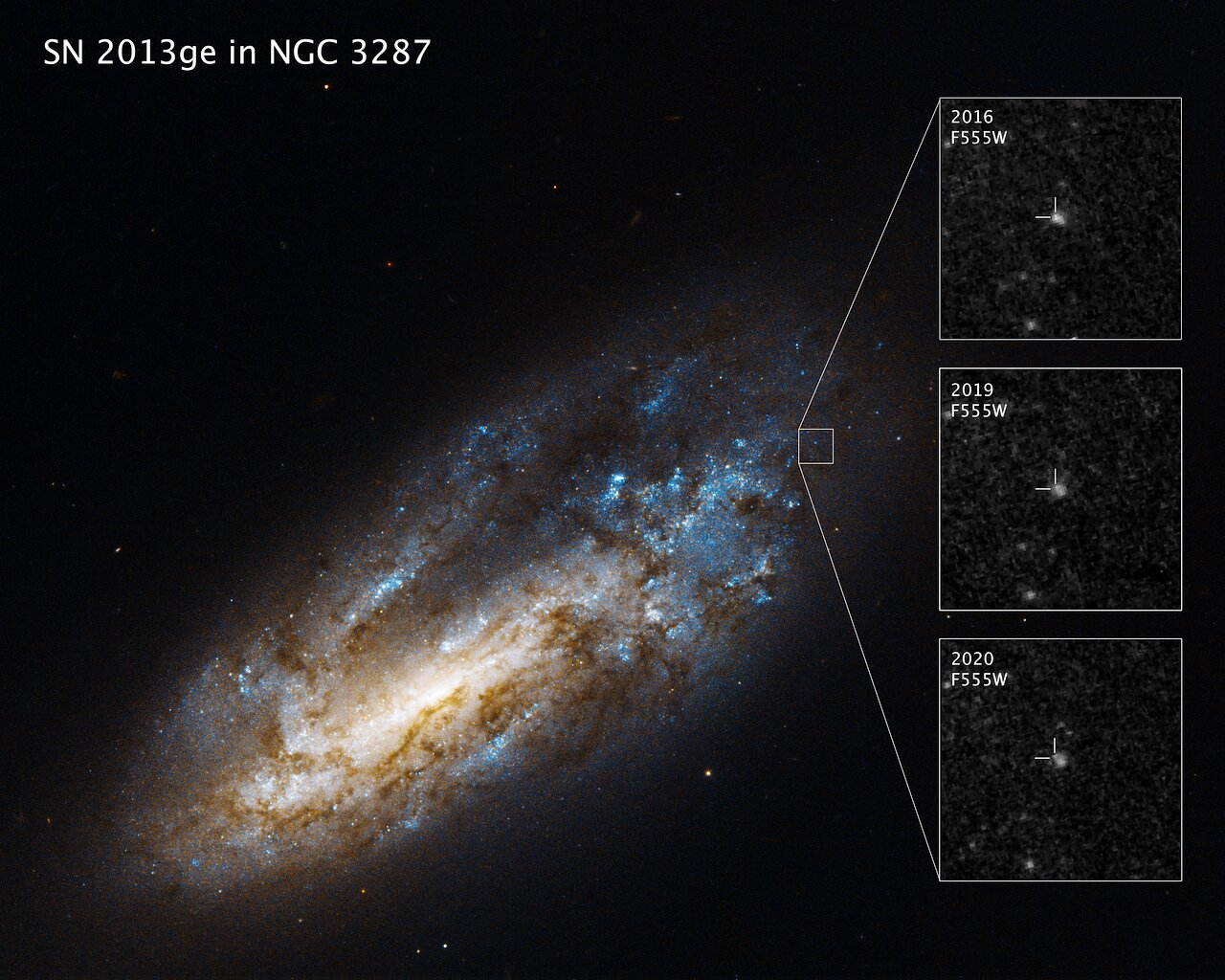NASA's Hubble spots surviving companion star in aftermath of supernova

Astronomers, using the NASA/ESA Hubble Space Telescope have identified a surviving companion star in the aftermath of a supernova. As a massive star itself, the companion is also destined to undergo a supernova - explosion of a massive star when it reaches the end of its life.
NASA says the discovery is a first for a particular type of supernova - one in which the star was stripped of its entire outer gas envelope before exploding.
"This was the moment we had been waiting for, finally seeing the evidence for a binary system progenitor of a fully stripped supernova. This was the moment we had been waiting for, finally seeing the evidence for a binary system progenitor of a fully stripped supernova," says astronomer Ori Fox of the Space Telescope Science Institute in Baltimore, Maryland, lead investigator on the Hubble research program.
Using Hubble's Wide Field Camera 3 (WFC3), the team studied the region of supernova (SN) 2013ge (in the galaxy NGC 3287) in ultraviolet light. They saw the light of the supernova fading over time from 2016 to 2020, but another nearby source of ultraviolet light at the same position maintained its brightness. The steady source of ultraviolet light was identified as its binary companion star.
Hubble's latest observations provide the best evidence yet to support the theory that an unseen companion star siphons off the gas envelope from its partner star before it explodes. Besides providing crucial insight into the binary nature of massive stars, the discovery also provides a potential prequel to the ultimate merger of the companion stars that would rattle across the universe as gravitational waves.
"Since we now know most massive stars in the universe form in binary pairs, observations of surviving companion stars are necessary to help understand the details behind binary formation, material-swapping, and co-evolutionary development. It's an exciting time to be studying the stars," Fox said.
The findings are published in The Astrophysical Journal Letters.
Hubble spotted a stellar survivor! ⭐The discovery of a companion star previously hidden in the glare of its partner's supernova is a first for a certain type of supernova – one in which the star was stripped of its outer gas envelope before exploding: https://t.co/FG0K8Osi57 pic.twitter.com/DeI1L6Lcy5
— Hubble (@NASAHubble) May 5, 2022










